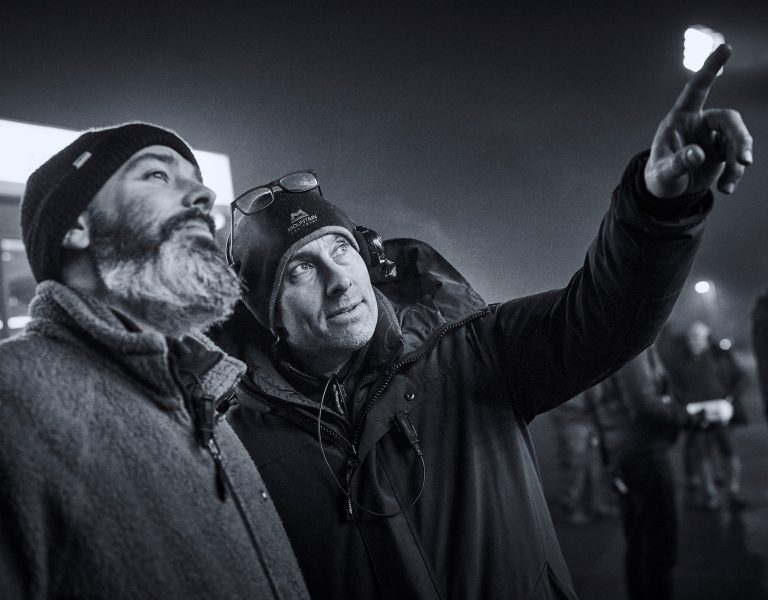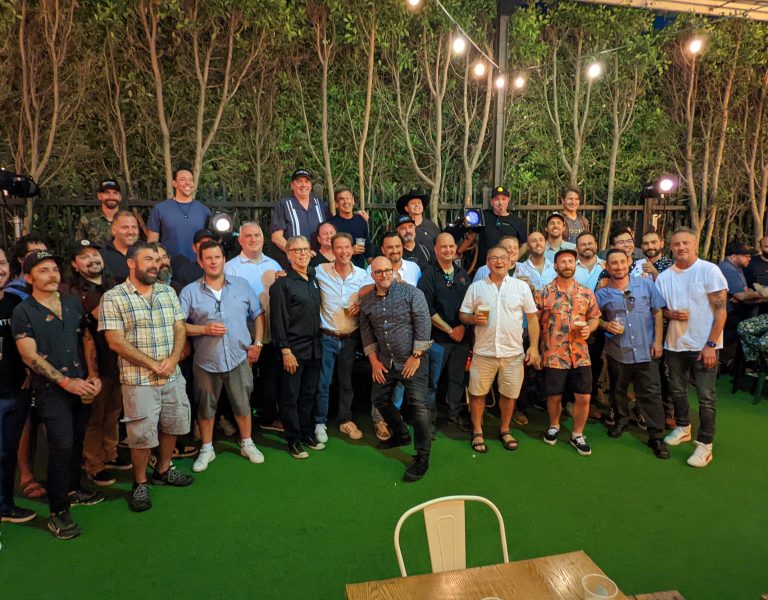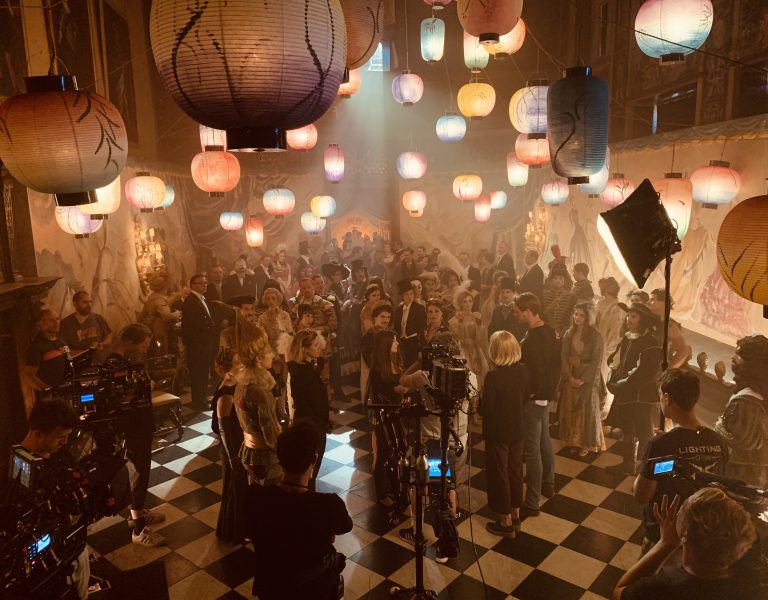The quality and efficiency of studio lights may have improved since Hollywood’s golden era, but safety remains non-negotiable.
The tragic and untimely death of cinematographer Halyna Hutchins and the injury to director Joel Souza after a gun was mistakenly discharged by Alec Baldwin during the making of Rust in 2021 brought on-set safety back into sharp focus.
Yet while this was described as a freak accident, it was a reminder that even small oversights or mistakes can have devastating consequences.
“Every production I work on requires set plans combined with electrical lighting rig designs, based around the visions of the DP, set designer and director,” says Martin Smith, co-founder and director of the International Cinema Lighting Society (ICLS) and a gaffer, with a CV boasting Mission: Impossible Dead Reckoning – Part One, 6 Underground, The Witches and Transformers. “Overloading, short circuits, fire protection – a lot goes into preparation before a cable is even put into a stage. In the UK, all our sets are designed to comply with BS7909, which is the temporary electrical installation British standard that we must adhere to in the film and TV industry – and not everyone does.”

Once the rigs are pre-lit, there’s a safety briefing, so everybody in proximity is aware of the potential dangers.
“The DP doesn’t have ultimate responsibility for a rig in terms of safety,” says cinematographer Dale Elena McCready BSC NZCS (The Burning Girls). “A DP is a layperson when it comes to safety, relying on the qualified expertise of their riggers, electricians and grips.”
Luke Bryant, cinematographer on The Last Kingdom: Seven Kings Must Die, adds: “If there are any safety issues they are normally dealt with and covered with a morning briefing and if there are any particular concerns about a lighting rig, they will have already been raised by the gaffer in their risk assessments prior to shooting.”
Likewise, Karim Hussain CSC, cinematographer on Infinity Pool (2023), says that’s also the protocol in the North American unions. “The electrics will bring up any rigging and cabling concerns, especially if there’s water on set that day,” he says. “They will explain that they are using GFIs (ground fault circuit interrupters) to protect the set, in case there’s contact with water – there’s a breaker that will turn off all the electricity, etc.”
Gaffer John ‘Biggles’ Higgins, who has worked on more than 70 feature films, including the recent Mickey 17, says: “We work under The Health and Safety at Work Act 1974, so we do risk assessments, method statements and we liaise with the owners, engineers, and administrators of the location. Every location has the potential to be hazardous if safe work practices are not observed – some people tend to take risks in the use of stepladders etc.”

Certain countries have a more cavalier approach to on-set safety than others, but cinematographer Jean-Marc Selva AFC (Lakadbaggha, Un été à Boujad) says “it’s important to not come across as knowing better” when working overseas with people you don’t know.
Quentin Jorquera, DP and virtual production consultant (House of the Dragon) and a former gaffer, says accidents and injuries are usually caused by incompetence: “I saw a DP pushing a gaffer into walking on roofs without any safety measures for a shot. Imagine the level of ego and hubris. People will put themselves at risk to prove their worth.”
Gaffer Helmut Prein (Dunkirk, John Wick: Chapter 4) concurs. “Electricity in general is still one of the biggest causes of injury to crews. Electrical shocks, tripping over cables, for example. I read that twisted and broken legs are very common issues. We’re in such a specialised working environment and we know that we are not just responsible for people on set, but also for our own careers.”

The good news is powering modern lights is far less of a safety hazard than in the past and Hussain says he likes Portable Electric’s emission-free, battery-powered Voltstack generators. “We’re using primarily LED lighting these days, particularly for interiors, so we no longer need to worry about excessive cabling if a battery-powered generator can be nearby or lights plug in the wall normally,” he continues. “Also, a lot of these new LED lights are reasonably waterproof, and battery powered – Astera’s Titan Tube Kit handles water very well, for example.”
However, Smith argues that “while the quality of lighting has improved”, today’s schedules don’t appreciate the art of lighting. “In the golden era, it would take a day to light a set – it now takes minutes,” he says. “Actors often don’t leave the set, so you end up working above their heads. You’re lucky to get five minutes to light a scene now, so we don’t even shoot with doubles. It’s that ‘rapido’ – more reactive than planned.”
If the worst does happen, there’s usually a medic on set. “You contact production first and then call an ambulance,” says Prein, “because it’s easier and faster than driving the person to hospital. Also, electric shocks are tricky to deal with because you don’t automatically know how serious they are, so the person goes under 24-hour observation.”
Remember, even the smallest of oversights can have devastating consequences. Stay safe.

TRAINING
Bright young sparks
If you harbour ambitions to become a gaffer or lighting technician, there are key training courses at your disposal. However, it’s also important to acquire hands-on experience.
“The new generation knows more about the wireless networking, whereas I don’t,” says Julian White, gaffer on The Midnight Sky and Cinderella. “It’s as much about experience as it is training. I think introducing a formal, universal qualification is a good idea because there are some highly qualified electricians, but they have no set etiquette.”
One can also gain relevant experience working in another branch of the arts. Cullum Ross, 2nd unit gaffer on Bridgerton season three and Man vs. Bee on Netflix, comes from a theatre background, which, he says, has been invaluable to his success in the film industry. “When you work in a theatre, you prioritise safety because you’re dealing with members of the public,” he adds. “In the industry today, lots of former industrial and commercial electricians have been introduced to film and television lighting or got jobs through friends. Others have come through the arts route. Typically, they may not have many technical qualifications, yet a film set is like a construction site, with many hazards.”
In the ‘90s and early 2000s there was a dedicated qualification and apprenticeship scheme run by the four big lighting hire companies of the time, according to Mark Thornton of Bectu’s Lighting Technicians Branch.
“This put approximately 140-160 new entrants (including me) into the freelance market,” he explains. “Alongside ran the NVQs, government-established qualifications which were being pushed in film and TV to get already working sparks ‘up to date’. These schemes failed because of the lack of audience. For many years, Bectu Lighting Technicians have been working with ScreenSkills, lighting suppliers and other industry stakeholders, to reintroduce a training scheme similar to the NVQs and apprenticeships hosted by lighting companies throughout the 1990s.”
Further information:
ScreenSkills says “those looking to go straight into a job or apprenticeship” can look to gaining Level 3 vocational qualifications in:
- BTEC Diploma/Extended Diploma in Electrical and Electronic Engineering
- City & Guilds Advanced Technical Diploma in Electrical Installation
- EAL Diploma/Advanced Diploma in Electrical Installation
The ScreenSkills electrical trainee programme is an initiative funded by the High-end TV Skills Fund to support electrical trainees for both short course qualifications and work-based learning. Visit: screenskills.com
–
Words: Robert Shepherd























